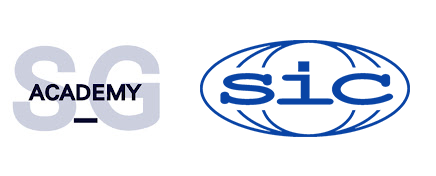Practices for supporting and improving environmental management systems in accordance with the requirements of ISO 14001
This course is designed to provide top management with the knowledge and skills necessary for the effective implementation, maintenance, and improvement of environmental management systems in compliance with ISO 14001 requirements. Participants will learn the core principles of ISO 14001, methods for analyzing environmental risks and opportunities, and tools for continuous improvement of environmental processes.
The course covers specific aspects of managing environmental issues at a strategic level, including the integration of environmental requirements into business strategies, reducing environmental impact, and enhancing resource efficiency. Practical exercises and real-life case studies will enable top managers to apply their knowledge in practice, contributing to the sustainable development of their organizations and strengthening their market reputation.
Duration
39 hours
Language
English/Ukrainian
Format
100% online
Objectives
The purpose of the course is to provide top management with the knowledge and skills necessary for the effective implementation, maintenance, and improvement of environmental management systems in accordance with ISO 14001 requirements. Participants will learn to integrate environmental principles into strategic business processes, minimize negative environmental impact, enhance resource efficiency, and ensure compliance with environmental regulatory requirements. The course focuses on developing competencies that will help organizations achieve sustainable development, improve their reputation, and strengthen their market position.
Target audience
- Senior management and executives: To acquire strategic knowledge and skills in managing environmental issues in accordance with ISO 14001.
- Environmental management system coordinators: To enhance and implement environmental management systems within their organizations.
- Internal auditors and environmental specialists: To conduct audits and process analysis to ensure compliance with environmental standards.
- Production managers and engineers: To optimize manufacturing processes to minimize negative environmental impact.
- Environmental protection specialists: To enhance their qualifications and implement effective environmental practices in their work.
- Any other professionals interested in improving the environmental aspects of their organization and seeking deeper knowledge of environmental management systems.
Document on completion
Top manager qualification certificate, specialization «Practices for supporting and improving environmental management systems in accordance with the requirements of ISO 14001», listed in the SIC International Register
Thematic plan
The course program includes two modules.
The program is designed for 39 hours, including time for studying theoretical material and taking tests.
Objectives
Module 1 The practice for implementing, supporting and improving the environmental management system in accordance with the requirements of ISO 14001. Environmental performance management
Number of hours
|
1 |
Foreword |
2.5 |
|
2 |
General provisions of the standard |
2.5 |
|
3 |
Context of the organization |
2 |
|
4 |
Leadership |
2 |
|
5 |
Planning |
2 |
|
6 |
Support (resources) |
2.5 |
|
7 |
Operation |
2.5 |
|
8 |
Performance evaluation |
2.5 |
|
9 |
Improvement |
1 |
|
|
Testing |
1 |
Module 2 Tools and approaches for the development and continual improvement of the management system
Number of hours
|
1.1 |
Understanding the organization and its context |
3 |
|
1.2 |
Understanding the needs and expectations of stakeholders |
1 |
|
1.3 |
MS scope and processes |
1 |
|
1.4 |
Leadership |
1 |
|
1.5 |
Policy and strategy |
1 |
|
1.6 |
Roles, responsibilities and authorities |
1 |
|
1.7 |
Actions to address risks and opportunities |
2 |
|
1.8 |
MS objectives |
1 |
|
1.9 |
Planning of changes |
1 |
|
1.10 |
Resources |
2 |
|
1.11 |
Documented information |
1 |
|
1.12 |
Operational planning and control over current activities |
1 |
|
1.13 |
Internal audits |
1 |
|
1.14 |
Management review |
2 |
|
1.15 |
Nonconformity and corrective action |
1 |
|
1.16 |
Improvement |
2 |
|
|
Testing |
2 |
